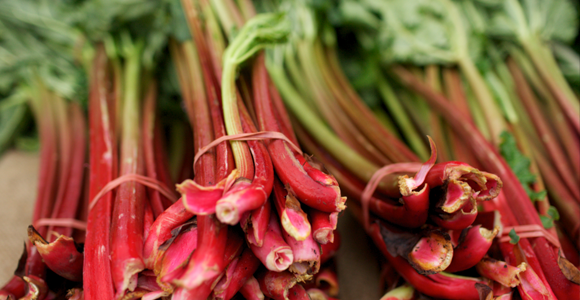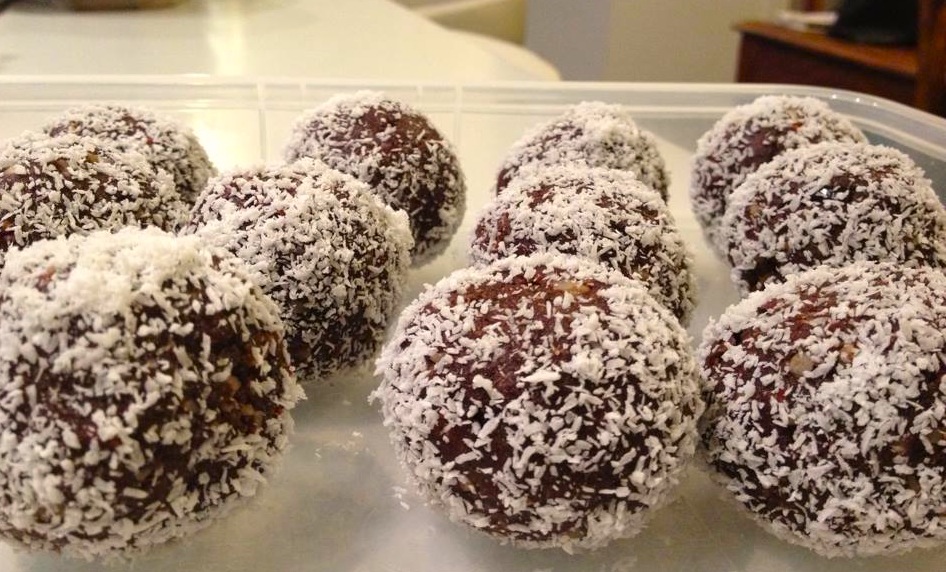A Bluffer’s Guide to Clean Eating
Don't get caught confusing your chia seeds from your quinoa.
If you’ve been on Instagram, food blogs, Twitter, Facebook or the internet in general lately, you've probably heard the term 'clean eating’. What on Earth does it mean, you ask? Is it washing your hands really, really well?
Well it's time to find out. We chat to Melbourne clean eating and nutrition queen Lola Berry about what clean eating is, how we do it and where she goes to get her fix. We even tried a few of the recipes out ourselves. All in the name of research, of course.

1. What is 'Clean Eating'?
Clean eating essentially means eating foods that haven't been processed and are as close to their natural state as possible. Think vegetables, fruits, legumes and lean meats. "It's about eating foods that nourish your body, forget all the packet stuff. Our bodies aren't designed to thrive of chemicals, additives and numbers, we thrive of real, wholesome food," says Lola Berry.
Now, don't think it has to be raw. That's a whole other can of worms (which, as a clean eater, would be a no-no). Cooked wholegrain wheat breads, brown rice dishes, chia bread and all sorts of other weird and wonderful concoctions are clean.

2. Why should we eat clean?
What is the point of going to the trouble of eating clean when it seems like a little bit of hard work? "You become the best version of yourself," Berry told us. "It's that simple. Don't knock it it'll you've tried it, proof is in the pudding. Eat clean for two weeks and watch the dramatic changes that take place in every single aspect of your life. I promise being healthy will change everything."
When it comes down to it, 'clean' foods have more of the good stuff that your body wants and needs and less of the bad stuff. Some of the benefits that can come from clean eating include blood sugar control, cholesterol control, more energy, better immune system, better sleep, better mood and an overall increased health.

3. How is 'clean eating' different from 'healthy eating'?
Okay, so this all seems like a good idea right? Eating fruit and vegetables and making your body happy? But how is it different to healthy eating? One thing we run into here is the philosophy of everything in moderation — even moderation. While healthy eating allows you a chocolate brownie covered in chocolate sauce and ice cream for dessert, as long as you don't have it every day, clean eating suggests you start making you desserts and 'treats' out of clean ingredients.
This introduces some troubling issues like obsession and rigidity in diet. While we're not experts, this idea, in a society fixed on body and image may run the risk of hurting not helping. Strictly clean eating doesn't allow for flexibility, which can bring guilt to meals — not ideal. It can also run the risk monopolising one's time and brain power. No one wants to go out for dinner and listen to someone talk all about why they can't eat the bread or drink the wine. Most health professionals will tell you that if you eat 'healthy' foods 80 percent of the time, you can indulge 20 percent of the time. The cheese loving, chocolate munching side of us loves this idea.

4. How to eat clean
"Think simple," says Berry. "Try not to complicate things. Real food is so simple, easy to prep and most importantly, so tasty!"
These are the principle foods in healthy eating:
- Fresh fruit and vegetable are a free for all. Go hard people.
- When it comes to protein, stick to the lean cuts of beef, pork, most fish, chicken, turkey and eggs. We didn't say bacon, we know, it’s depressing.
- Whole grains including oats, wholewheat pasta, brown rice, barley and the like. This is the same for flours. Stick to the wholewheat flours, coconut flours and almond flours where you can.
- Nuts! All of them. Raw is the way to go.
- Seeds. Now these bad boys are your best friends. Quinoa, sunflower seeds, sesame seeds and chia seeds.
- What about flavouring up your meals? Again stick to natural things like spices and herbs, honey and pure maple syrup.
- Now dairy can get confusing. Raw milk is hard to find, so the easiest bet is organic. Plain unsweetened yoghurt is a star, as are your substitutes like almond milk, rice milk and coconut milk.

4. Buzz words 101
So if you do want to introduce some principles of healthy eating, you might stumble upon ingredients you've never heard of. Here are some goodies:
- Quinoa: This seed looks a little like couscous and a little like rice. What you might not know is it's a close relative to beets, spinach and tumbleweeds. Great for breakfasts and salads.
- Chia seeds: This ancient superfood from Paraguay is pretty much just a sprinkling of goodness. These are tiny black and white seeds packed with manganese, calcium and potassium.
- Goji berries: These little suckers have been used in Chinese medicine for thousands of years and are said to boost one's life force of ‘chi’ — oh so yogi. They're a little sour and are great sprinkled on your breakfast.
- Raw cacao: This is like the chocolate of the clean eating family. Take the raw cacao product — what chocolate looks like before the Cadburys of the world get to it — and don't touch it. It's packed with antioxidants and has a bitter strong chocolate flavour.
- Agave Syrup: This is a naturally occurring sweetener found in the agave plant in Mexico. This plant is also used to make tequila (Margaritas anyone?).

5. Recipes to try
Breakfasts and snacks are often filled with processed ingredients. A great clean breakfast can look like this: oats cooked in almond milk, just like normal porridge, topped with fresh fruit, chopped dates, walnuts, agave syrup and a sprinkling of chia seeds. This can be played around with, adding any fruits and nuts you like. It also works well with quinoa flakes.
When it comes to snacks. There are some great brands out there making clean sweets like Loving Earth and Emma & Tom's, but if you're in the mood for whipping something up, give Lola Berry's chewy almond truffles a go. Dates, walnuts, almonds, coconut oil, goji berries and raw cacoa nibs blended together and rolled in coconut.

6. Best spots in Melbourne to buy and try clean products
We turned this one over to Lola Berry: "I eat out lots and there's always something yummy for me to try. I love St.Ali south and north, and I'm lucky enough to write a few recipes which are featured on the menu, and they're all super healthy. I also love the raw foodie spots like Yong Green Food, Shokuiku and Monk Bodhi Dhama and, of course, Cumulus Inc for that amazing fine dining experience.
"I love local farmers markets … Prahran market, and there are some awesome health stores around. Prahran Health Foods, The Staple Store, Pure Organics, The Fruit Peddler are all pretty amazing, such inspiring places to visit!" Berry told us.
Well folks, at the end of the day it seems that all the fuss around clean eating is about taking things back to simplicity. We will propbably still be found eating Mars bars and drinking cocktails, but you never know, next time we're feeling the healthy vibe, we might whip up something clean. It's not for everyone, but hey, next time someone asks you at a dinner party, "So how do you feel on the clean eating front?", at least you'll be able to tell your chia from quinoa.

Images courtesy of Lola Berry and Amy Collins.











